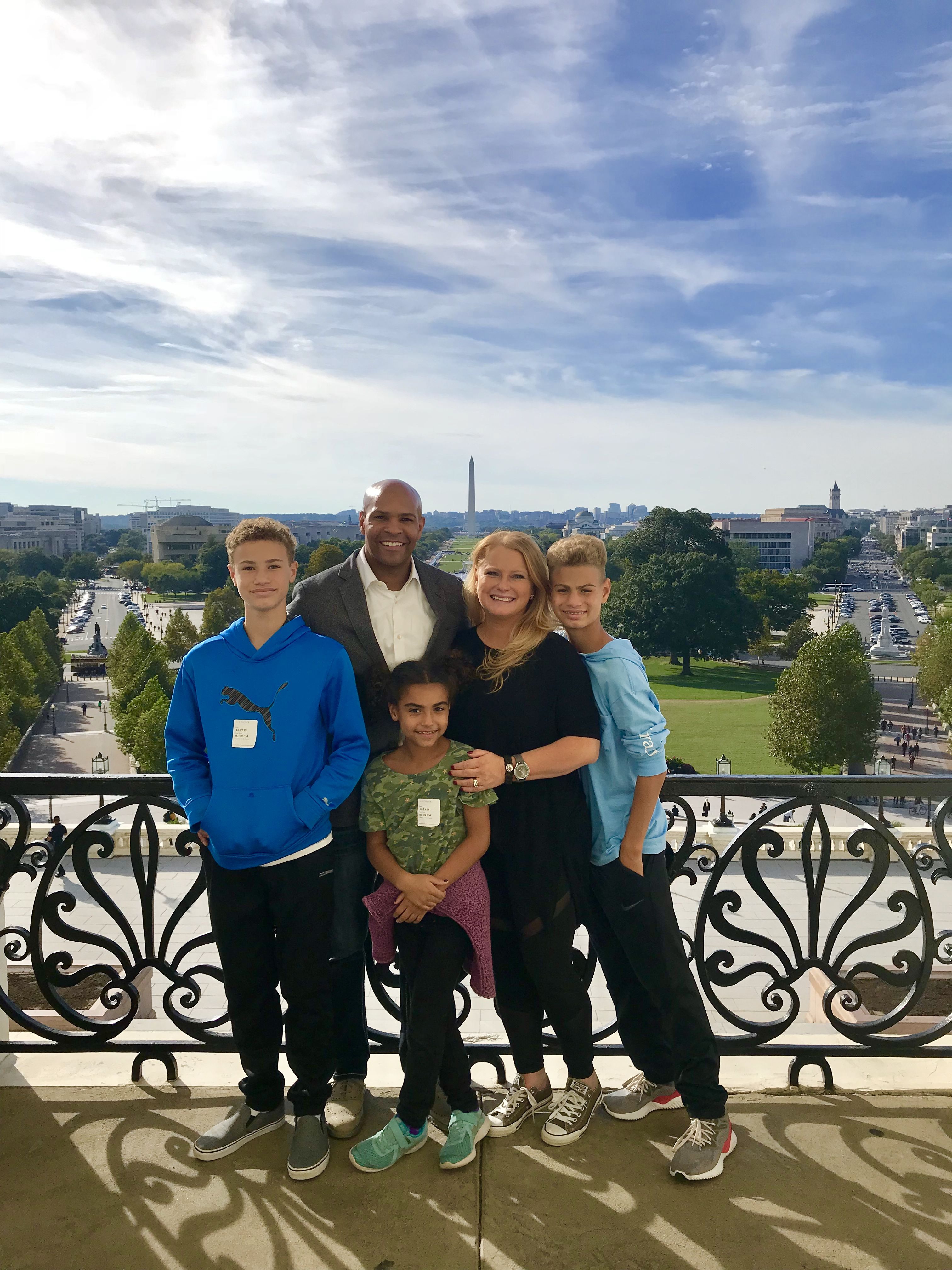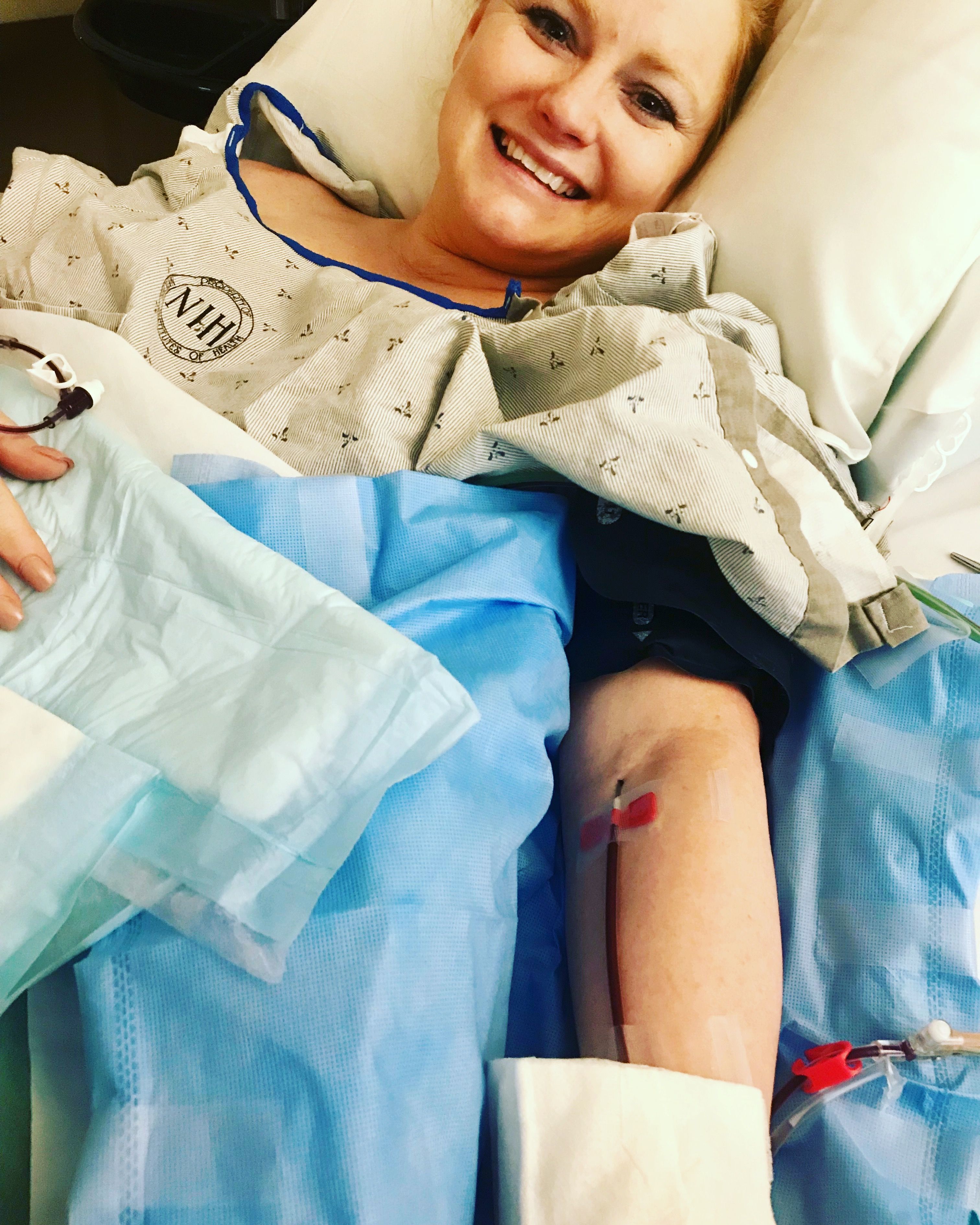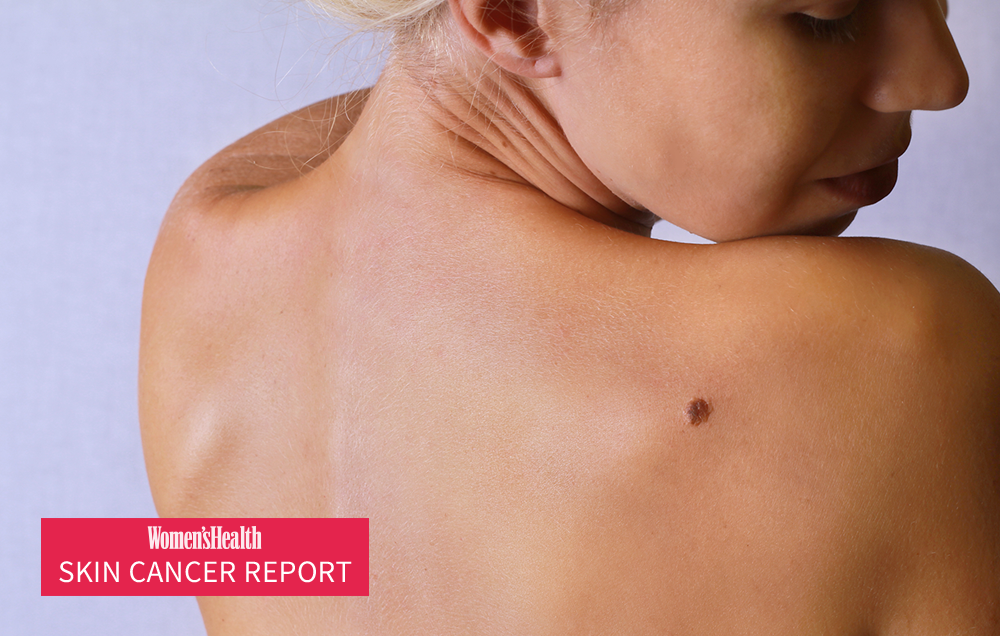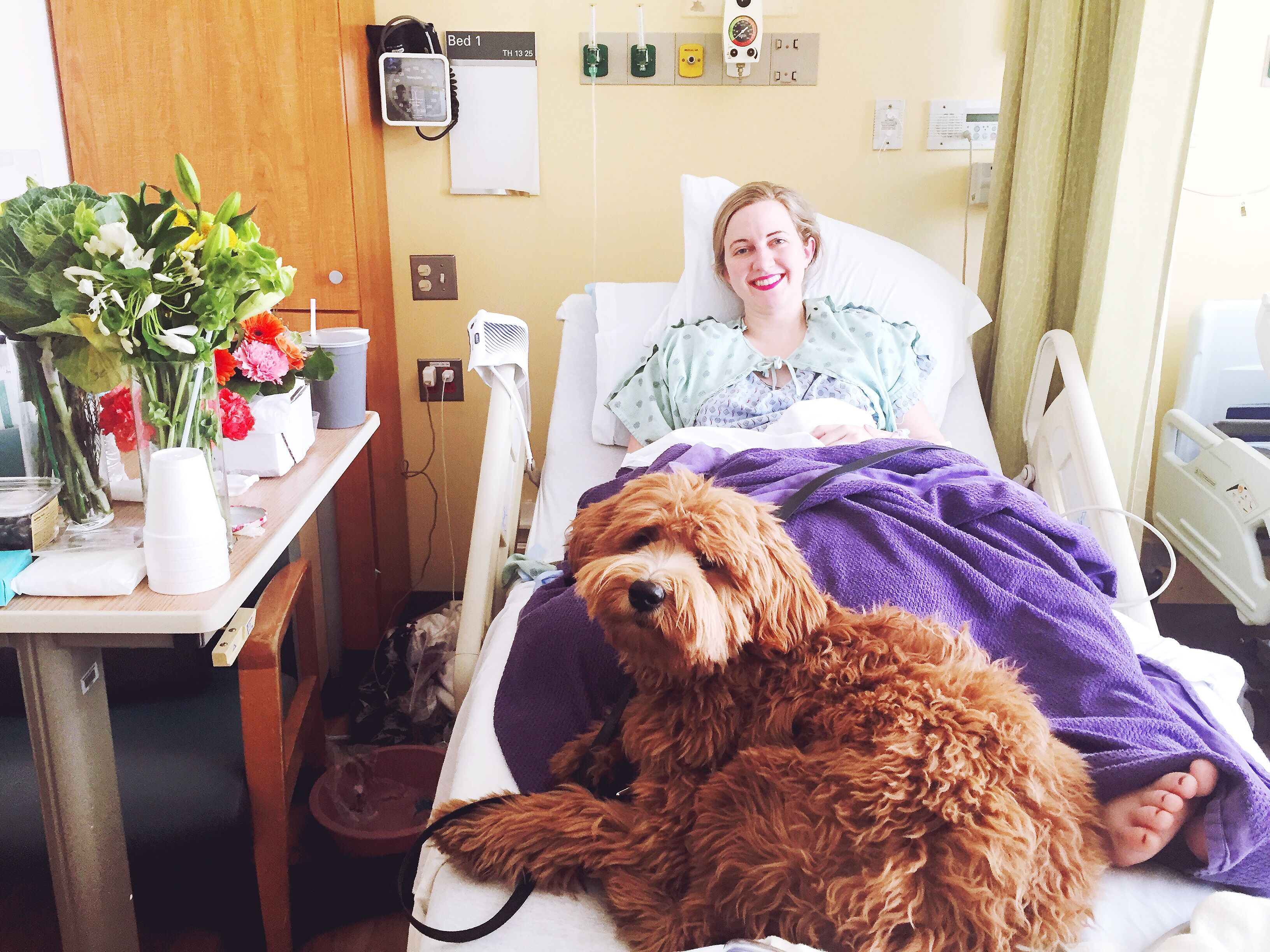
As a mom of a newborn and two very active toddler boys, cancer was the absolute last thing on my mind when I went in for my postpartum checkup that day in 2009. In fact, it was so far out of the realm of possibility that, even though I had noticed the new dark mole on my thigh, I almost forgot to mention it to my ob-gyn.
Surely it was nothing. It was so tiny! But I had just had a baby and didn’t want to take any chances with my health, no matter how silly it seemed at the time.So I asked her about it, and she told me it was probably nothing. But to be safe, she removed it.
It wasn’t nothing. It was skin cancer. And not just skin cancer, but melanoma—one of the deadliest. I was shocked.
I shouldn’t have been so surprised, honestly.
I was a pale blond who wanted a golden tan throughout my teens and 20s, and I would lay out in the sun for hours. At 14 years old, I started using indoor tanning beds regularly—my friend even had one in her house that we both used at least once a week. Now, I know that tanning beds are one of the biggest risks for all skin cancers, including melanoma. But back then, it was just something all of my friends did. We all wanted a “healthy glow,” a phrase that, in hindsight, makes me want to scream.
My diagnosis that May was shocking but not terrifying. We’d caught it early, and all I needed was a minor surgery to remove surrounding tissue near where the mole had been. I had the surgery a couple of weeks later. When I tested “clear” for cancer in my scans over the next year, I was told to visit the dermatologist once a year to monitor my skin health but not to worry about it anymore. Crisis averted…right?

For the next decade, I focused all my energy on raising my children and supporting my husband, Jerome Adams, as his career reached new heights. In September 2017, he was sworn in to the demanding position of United States Surgeon General. He’d been an MD for years, but as the “nation’s doctor” and head of the US Public Health Service Commissioned Corps, he would now be the spokesperson for all matters of public health in the United States.
I was so proud of him and excited for him, even though it would mean a huge change for our family. We were living in our home state of Indiana (and I’ll always be a Midwest girl at heart); but in January 2018 we packed up the kids, the dog, and the house, and moved to Washington D.C.

Moving halfway across the country with kids is a huge endeavor, even if your husband has a more typical day job. Add in the extra red tape that comes with working for the government, and my husband’s schedule was intense. Getting my kids settled and our new home established became my full-time job.
That’s why cancer was nowhere on my radar when I felt some weird lumps in my groin while shaving my bikini line.
I mentioned it to my husband in passing—he is a doctor, after all—but while dealing with all the hecticness in our lives we both forgot about it.
A few months later, the lumps were still there, so I mentioned them to a friend who also happens to be a doctor. Her face went from bubbly to serious in seconds.
“Are they on the same side as your mole was?” I remember my friend asking me.
“Yes.”
“You need to go to the doctor today. Now.”
She was right to be concerned. Fortunately, I was able to get in right away to see a primary care doctor, who ordered blood work and PET and CAT scans.
Before I could even wrap my mind around what was happening I had my answer: melanoma, again.
This time, the cancer was much worse.
I got the news sitting in the carpool line, waiting to pick up my kids from school. My whole body went numb. Jerome was out of town and my friends and family were more than 10 hours away. I was utterly wrecked and had never felt so alone.
We made an appointment for the next day at the cancer center at the Walter Reed National Military Medical Center. After undergoing a half-dozen different tests, we learned that those lumps I’d felt were lymph nodes where the cancer had spread. It had metastasized to a small area of tissue, meaning my cancer was stage 3C. For some perspective, stage 4 melanoma has a survival rate of about 24 percent, according to the American Cancer Society, and even at a 3, my diagnosis was possibly fatal.
Cancer was nowhere on my radar when I felt weird lumps in my groin while shaving my bikini line.
As my doctors and my husband debated my treatment plan, I floated on in a strange sense of denial. I felt totally fine—nothing hurt and I was the picture of good health from the outside—yet a cancer was growing inside me that could potentially kill me. What’s more, I had no idea when exactly it had come back over the last 10 years, nor did my doctors. Or, it was possible that it had been there all along. We still don’t know.
What would I tell my kids, who were 13, 12, and 8 and very much still needed their mother? I was only 41, how was this even real?
Time was of the essence and I needed to start treatment immediately.
I didn’t have time to wrap my head around everything. At the end of March 2018, I had surgery to remove 12 cancerous lymph nodes and their surrounding tissue. Then I started immunotherapy, a newer type of cancer treatment that uses parts of your body’s own immune system to destroy cancer cells. I got immunotherapy drug infusions regularly for a year.

Immunotherapy replaced chemotherapy for me (although some people may receive multiple types of treatment), and I didn’t suffer from many of the common side effects you might associate with cancer treatment. I didn’t lose my hair, my weight stayed stable, and I didn’t throw up constantly. My side effects seemed mild: I got an acne-like rash on my torso, dry mouth, and was very fatigued.

Perhaps the most annoying side effect was the extreme swelling in my left leg (which my doctors thought was probably a consequence of having my lymph nodes removed rather than from the immunotherapy). I’m still dealing with that, but otherwise, I have been able to carry on with my normal daily life—I even put on a fancy dress and heels to attend a formal State dinner just one month after my surgery—something people with cancer even 10 years ago couldn’t even imagine.
I got my last immunotherapy treatment on May 9, 2019. I feel pretty great, physically. All my scans and blood work are cancer-free.
Emotionally, however, it’s been a tougher recovery.
I’ve always struggled with depression and anxiety, and this experience took a serious toll on my mental health, which has affected my recovery. I started having panic attacks, crying sessions in the shower, and I started waking up in the middle night feeling wrecked. It’s just not fair, damn it, I thought. I would break down privately but then put on my makeup and try to present a happy face in public.
I want people to know that while I am doing better now, it has taken hours of therapy, medication adjustments, and a lot of patience from my family to get through this year. We often think cancer survivors are “supposed” to be happy and just grateful to be alive. The reality is, we’re not Instagram quotes—we’re people, and people are allowed to feel upset, angry, and even seriously depressed.

I’ve also had a lot of survivor guilt. If we’d caught my cancer even a few weeks later, I might not be here to share my story. I am grateful I had access to quick and high-quality health care and I feel strongly that everyone should have this available to them. I keep thinking of a woman I knew back in Indiana who had had a similar melanoma to mine; she was not diagnosed as quickly and she died. I know I am blessed, that God has a purpose for this, and I am grateful to be alive and with my family.
But I also know that, because I’ve been given so much, I have a responsibility to help others. Now I’m on a mission to increase awareness of skin cancers, particularly in young women, and to help women with melanoma get diagnosed sooner and have access to cutting-edge treatments like I had.
As women, we often prioritize everyone else’s needs above our own.
I want other women to remember that it’s so important to take care of their health too. Don’t downplay your symptoms, trust your intuition if you feel something is wrong, and get medical attention right away. Don’t worry about inconveniencing people, or about making your spouse worry or having to put off your kids’ activities. You are important, and what they want and need most is for you to be happy, healthy, and in their lives for a very long time.

I was reminded of this the other day when my daughter, Millie, looked up at me with her big, dark eyes and asked, “Aren’t you done with this cancer thing yet?!” Ah, the blunt honesty of kids.
“I’m almost done with my cancer treatments,” I told her. “But I’ll never be completely done with cancer.”
And that’s a good thing: It means I’ll always be fighting for better cancer care for women everywhere.
How can you help protect yourself? By remembering these melanoma facts…
…straight from the US Surgeon General. My husband, Jerome, shared the following facts and “rules” to live by that are crucial for lowering your risk of developing skin cancer:
- Melanoma is the leading cause of cancer death in women 25 to 30 years old, but it’s almost entirely preventable with good sun safety habits.
- Melanoma has doubled in the U.S. over the past 30 years, with young women showing the largest increases.
- Remember: Tan skin is damaged skin! There’s no such thing as a healthy glow, and using a tanning bed makes you eight times more likely to get melanoma.
- Hats should be one of your favorite fashion accessories. Wearing a hat outdoors is a great way to protect yourself from sun damage.
- Know your ABCDEs: Any mole that shows Asymmetry, an irregular Border, uneven or changing Color, has a Diameter bigger than a pencil eraser, or is Evolving (changing) needs to get checked out by a dermatologist right away.
It’s worth pointing out that there are risk factors that may put you at a higher risk that may be out of your control (family history, for example), though that doesn’t mean you will get melanoma. But knowing these facts can hopefully help remind you just how important sun protection is, and potentially even save your life.
To read more about Lacey’s experience, check out her blog.
Source: Read Full Article